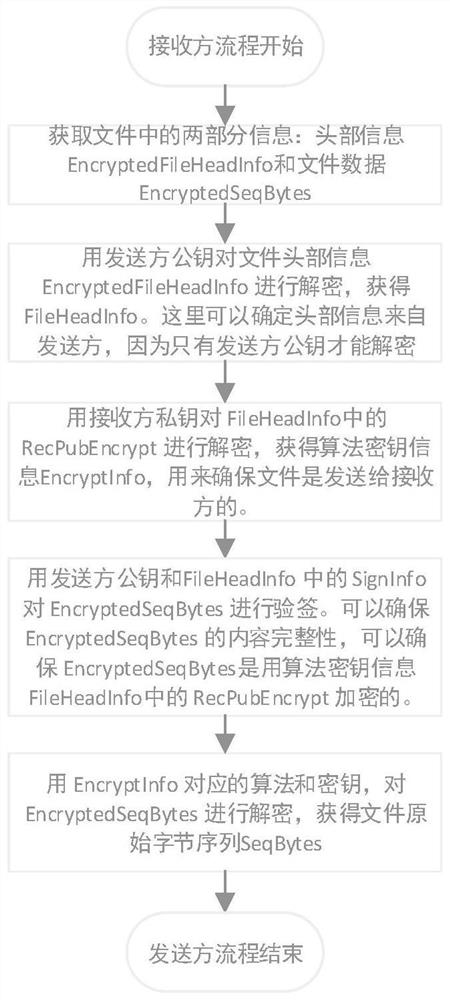File encryption transmission method combining identity authentication and dynamic key
A dynamic key and file encryption technology, which is applied in transmission systems, digital transmission systems, usage of multiple keys/algorithms, etc., can solve problems such as key exchange troubles, exchange keys cannot be directly transmitted publicly, etc., and achieve key Easy exchange and fewer keys
- Summary
- Abstract
- Description
- Claims
- Application Information
AI Technical Summary
Problems solved by technology
Method used
Image
Examples
Embodiment Construction
[0032] The present invention will be further described below in conjunction with drawings and embodiments.
[0033] Such as figure 1 , figure 2 As shown, a file encryption transmission method that combines identity authentication and dynamic keys uses a symmetric encryption algorithm and an encryption key to encrypt and decrypt file content. The specific implementation steps are as follows:
[0034] sender:
[0035] Step (1) Randomly select a symmetric encryption algorithm from the list of selectable symmetric encryption algorithms.
[0036] Step (2) Generate a random symmetric encryption key according to the selected symmetric encryption algorithm.
[0037] Step (3) Encrypt the plaintext of the file content with a symmetric encryption algorithm and a symmetric encryption key to generate a ciphertext of the file content.
[0038] Step (4) Use the sender's private key to sign the ciphertext of the file content to generate signature information.
[0039] Step (5) Connect ...
PUM
 Login to View More
Login to View More Abstract
Description
Claims
Application Information
 Login to View More
Login to View More - R&D
- Intellectual Property
- Life Sciences
- Materials
- Tech Scout
- Unparalleled Data Quality
- Higher Quality Content
- 60% Fewer Hallucinations
Browse by: Latest US Patents, China's latest patents, Technical Efficacy Thesaurus, Application Domain, Technology Topic, Popular Technical Reports.
© 2025 PatSnap. All rights reserved.Legal|Privacy policy|Modern Slavery Act Transparency Statement|Sitemap|About US| Contact US: help@patsnap.com


